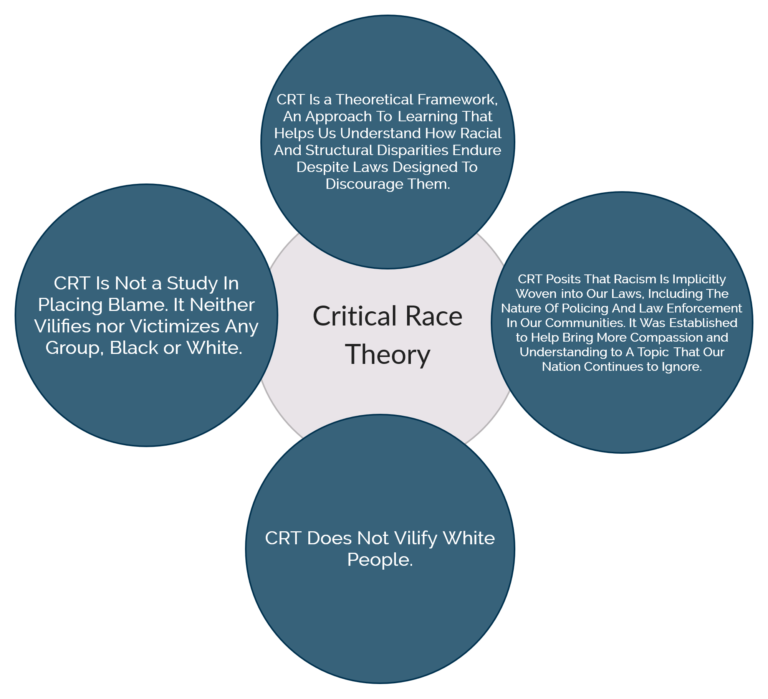Our Mission
The Fair Fight Initiative exposes systems of racial injustice in America and works to end systemic racism.
One of the most talked-about subjects in politics today, Critical Race Theory (CRT), has become a lightning rod for controversy. Yet despite the whirlwind of opinions flying around about it, it’s clear that many don’t truly understand what, exactly, Critical Race Theory is and what it isn’t.
To help clarify matters, and to help foster objective conversations based on facts, The Fair Fight Initiative has put together this simple informative guide. One caveat before we dive into it – CRT is a constantly evolving field of study. As such, no guide can ever truly be considered complete. What follows is simply intended to offer a solid knowledge base for discussion.
Fundamentally, CRT is an approach to holistically studying U.S. policies and institutions, with a wide focus encompassing such subjects as criminal legal, employment, housing, health care, and education, among others. In plain terms, CRT suggests that racism is part of a broader pattern in America. At the highest level, CRT posits that racism is implicitly woven into our laws, including the nature of policing and law enforcement in our communities. Drilling down to everyday life, this systemic racism impacts everything from hiring practices to home loans.

CRT first emerged in the 1970s and 1980s, when law school professors explored how race and racism have shaped American law and society. The catalyzing factor behind this exploration was the mixed results of the Civil Rights Act of 1964, which was designed to remedy historical racial inequities by ending Jim Crow, desegregating schools, and ensuring voting rights for Black people. With each of those goals unfulfilled decades later, it was clear some questions needed answered.
At its base, CRT is a legal theory, one that views race as a social construct and explores the relationship between racial inequality and the law. The core idea is that racism is not merely the product of individual bias or prejudice, but something institutionalized within the structures and policies of our legal system.
As much as CRT has become part of our national dialogue, much of the discussion around it focuses on facets of it that are simply non-existent. Despite no evidence that CRT is taught in any of our K-12 schools, some politicians and news organizations have fueled controversy around CRT and used it as a wedge to divide us.
As such, it may be helpful to begin by explaining what CRT isn’t before explaining what it is.
First and foremost, CRT does not vilify white people and does not cast the non-white population as perpetual victims. To be clear, CRT is not a study in placing blame. It neither vilifies nor victimizes any group, Black or white. It doesn’t even operate within that binary. It instead focuses on the larger forces at play in our society, forces that maintain a strict stratification between races.
Another misconception is that CRT is, in and of itself, inherently racist. Critics of CRT claim it presents a strictly negative picture of the United States, one designed to make young people ashamed of their country and themselves. This is a dangerous oversimplification. CRT merely encourages a clear-eyed view of this country’s history and the racial prejudice that has informed our legal structures, an essential view if America is to ever live up to its ideals of equal justice under the law.
Some politicians and news pundits claim that CRT furthers racial division, but it’s the opposite. It’s an unfortunate side effect of our society’s growth that we have already separated ourselves along racial lines, and ultimately CRT aims to fix that. The goal is to heal those divisions and make this country live up to the lofty promises of freedom and equality enshrined in its constitution and post-Civil War amendments.
CRT is a theoretical framework, an approach to learning that helps us understand how racial and structural disparities endure despite laws designed to discourage them. Its teaching is relegated to law schools and some universities, and it is not taught in any K-12 schools. It aims to help people learn from the mistakes of the past, demonstrating how racism and prejudice informed the creation of these laws.
The idea is to get people to think systemically. As opposed to viewing racism as simply a conflict between individuals based on race, CRT posits that racial bias is perpetuated and inflamed by the very structure of our society.
As a legal theory, CRT explores and illustrates how the law can promulgate or support racial disparities. As a social theory, CRT recognizes that racism is a social problem. With that dual focus, it’s interested in focusing on institutions, structures, systems, processes, assumptions, discourses, narratives, and large macro processes that have fostered racial inequality.
So critical race theory is a framework, one developed to help us understand how it is that structural and racial disparities endure in our society and how that is engendered in some of our laws and policies. The theory rests on the premise that racial bias – intentional or not – is baked into U.S. laws and institutions. Black Americans, for example, are incarcerated at much higher rates than any other racial group. CRT invites scrutiny of the criminal legal system’s role in that disparity with a dispassionate view that the law falls far short of the ideals under which it was created.
Critical race theorists hold that racism is inherent in the law as it currently exists. These laws, when viewed through the framework of CRT, are inherently designed to create and maintain social, economic, and political inequalities between whites and nonwhites, especially Black Americans. Beyond simply studying these injustices, critical race theorists are generally dedicated to applying their understanding of the institutional or structural nature of racism to the concrete goal of eliminating all race-based and other unjust hierarchies.
The Fair Fight Initiative operates advocacy and awareness campaigns to shine a light on injustice within our society. Through crowdfunding, we provide litigation and community advocacy to help people seek justice.
Fair Fight relies on financial support from the public to continue the fight against racism and injustice. We ask everyone to consider donating to the Fair Fight Initiative. Your gift will be used to allow us to continue our fight against systemic racism.
Featured in The Media




